I hope that people see the work that we’re doing and are inspired to understand that the future isn’t defined, and you can do something about it if you roll up your sleeves and start in your own backyard by doing something deliberate that you care about. It brings you a tremendous amount of self-gratification, but you also might start to see the ripple effects change your community.
Caleb Pollard
Through community-driven investments in health care, economic development, and civic leadership, the town of Ord, Nebraska, stands as a model for rural renewal. A modern hospital with state-of-the-art features has helped to attract and retain residents, and a local sales tax fund has provided resources to finance projects that have made Ord’s business community vibrant. Exceptional among many neighboring towns across the prairie, Ord has a vibrant civic culture and economic future.
Featuring:
- Melani Flynn, Chair, Valley County Community Foundation Fund
- Ryan Flynn, President, Valley Performing Arts and Theater, Ord, Nebraska
- Nancy Glaubke, former CEO, Valley County Health System
- Caleb Pollard, Executive Director, Valley County Economic Development
- Robert Stowell, Attorney, Ord, Nebraska
- Ashley Woodward, CEO, Valley County Health System
Want to learn more? See Tony’s interview with Tyler Malone on the role of rural hospitals in sustaining community health and development.
Transcript
PROMO VIDEO: When you think about it, most places break life down into four primary elements. Living, working, playing, and giving. It’s like that here in Valley County too. But those who live, work, play and give here know that there’s nowhere else in the country where those four elements come together in such balance and harmony.
PIPA: In the decades before making this video, Valley County, Nebraska, and its county seat, Ord, Nebraska, would have been hard-pressed to make such claims. It was losing population and businesses. All that has changed now, and it’s no accident that just 15 seconds into this description of life there, it features the local hospital. Valley County Health System is the county’s largest employer, and it’s been an essential part of the turnaround story here in Ord, where it’s located.
POLLARD: And without it, we would not be here.
PIPA: That’s Caleb Pollard, the county’s economic development director.
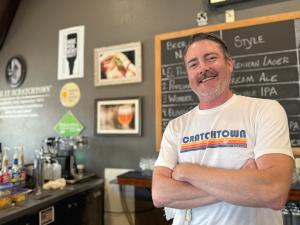
POLLARD: My wife has been employed, I believe, 16 of the 18 years we’ve lived here in town there. And so I think for a lot of families, their connection to this community is because of that stable job opportunity there and the benefits that come with it. So from a family standpoint and a community standpoint, it’s essential to our past, our present, and our future for our community.
PIPA: In this episode of Reimagine Rural, you’ll hear two separate but deeply interconnected stories of reinvention: that of Valley County Health System, and its importance to the renewal of downtown Ord itself.
[theme music]
I’m Tony Pipa, a senior fellow in the Center for Sustainable Development at the Brookings Institution, and your host for the podcast, where I talk to local people, capture their stories of the positive changes unfolding in their hometowns, and explore the implications and the intersections with public policy.
Ord, in north central Nebraska, is a town of about 2,100 people situated at the edge of the Sandhills — a stunning expanse of rolling sand dunes in the High Plains, blanketed with prairie grass, that covers about a fourth of the state. This part of Nebraska is fairly remote, three hours west and a bit north of Omaha.
Spending time here in Ord, I could easily see its appeal.
[music]
On a sun-dappled afternoon after school, I encountered a bunch of kids perched on their bikes and scooters in the middle of a downtown street, chatting, laughing, and just generally having the run of the place. It looked like a scene from a movie! A slower pace of life, a sense of community and family, access to nature, and local leaders determined to keep Ord vibrant. That’s why people like Caleb put down roots here.
[3:03]
POLLARD: I think this is a really unique part of the country. I am from a very different part of the state of Nebraska in terms of topography and geography, and I love the open spaces and the way the sun sets in the west. And it’s it’s just a really beautiful place.
PIPA: In the 1960s, Ord’s growth was steady, and in that decade, residents voted to build a hospital that would replace an existing facility that had fallen into disrepair. Over the years, hospital leaders added on, creating more beds and services.
[3:34]
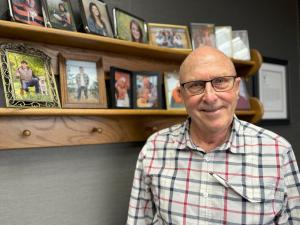
STOWELL: Hospitals are so critical to the prosperity and of a rural community, especially, because if we didn’t have our hospital here, and frankly I might not have two children living if we didn’t have our hospital here. But it’s 65 miles to Grand Island and 72 miles to Kearney.
PIPA: That’s Bob Stowell, an attorney who is sort of an elder statesman in Ord. Throughout several decades, he’s been central to helping Ord diversify its economy. We’ll hear more about that later.
[4:06]
STOWELL: And the other thing is our hospital is the largest employer in the county. So from the economic development side, it’s fantastic. I sold some real estate the first 48 years as I practiced law. It just kind of was my golf. I enjoyed it. And when people would come to town and I’d show ‘em houses in my early years, you know, what’s your first question? How’s your health care? If that’s not the first question, it follows quickly, how’s your education system? And to have a vibrant community that will be good for people attraction, we have to have good health care.
PIPA: By the 1990s, though, the hospital was at risk of closing. Valley County officials considered taking over control from the appointed hospital board.
[4:55]
STOWELL: And I went up to the county board to plead support for the hospital. And the county board president said, well, why don’t you do a task force, and we’ll just see what the public feels about this. And so I went to the hospital board chair and said, this is what the county has said. And he said, okay, you be the chair of the task force. That’s what you get when you open your mouth in these small communities.
And so, we did town hall meetings in in Ord, Arcadia, and North Loup, Burwell. And we learned some things that people were happy about and not happy about. And during this time, I think it was in the early ‘90s, we formed a foundation for the hospital.
PIPA: In 2001, the facility became one of Nebraska’s Critical Access Hospitals — part of a federal program to improve health care access in rural and underserved areas. The designation was important. If the hospital in Ord were to close, the next nearest medical center is almost an hour away. Hospital systems with critical access status receive certain Medicare reimbursements for the services they offer — and, in a way, help to secure their future.
But still, the long-term outlook for the hospital in Ord felt precarious. Word of these problems had apparently even reached Omaha, where the state’s two medical schools are located.
[music]
[6:26]
STOWELL: I was even told that down in the med school there was on the billboard it said, or bulletin board, it said Ord’s probably not a good place to go as a new doctor. So we were devastated.
PIPA: 2006 was an especially difficult year for the hospital: One department was cited for deficiencies and placed on probation. When Ashley Woodward started as the hospital’s CFO late that December, she took one look at the books and knew she had her work cut out for her.
[6:55]
WOODWARD: The financial situation was hard. It was not easy. We definitely had very few days’ cash on hand.
PIPA: In the late aughts, as hospital officials began thinking about necessary upgrades, they again turned to the citizens for help. This time it was in the form of a bond issue for $21.3 million. But asking the community to support an entirely new hospital, now, instead of renovating the existing one, was a gamble.
Nancy Glaubke had grown up in Ord, and after living and working elsewhere, had been CEO of the hospital for a couple of years in the late ‘90s. At this point she was the county’s economic development director.
[7:41]
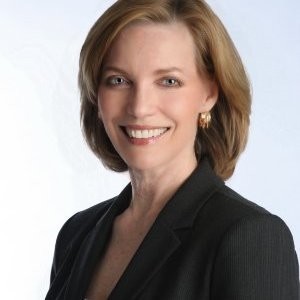
GLAUBKE: The community was very, very divided at that time. We can’t afford any more taxes; property taxes are too high. If we build a new hospital and if it doesn’t succeed, all of that is gonna go on the tax rolls. So there again, there had to be a lot of education, a lot of talking to individuals, going to community meetings, going to the Lions Club, going to the Rotary and answering questions and saying, this is what we are proposing.
PIPA: In 2008, the bond passed, but just barely. Two years later, the new 68,000-square foot hospital opened its doors, with sixteen acute-care beds, two operating rooms, medical and specialty exam rooms, high-tech imaging equipment, and a chapel. Here’s Ashley Woodward again.
[8:32]
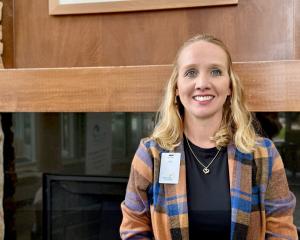
WOODWARD: They had looked at a lot of different renovation ideas. And I feel like once you start renovating, you’re just gonna keep renovating. And we were at that time on the side hill, and it was just very dangerous for patients on the side hill when it was icy. So that’s why we went the direction to a whole completely new build.
And so obviously with the bond, the community would’ve been responsible for paying it back if we were not able to make the payments. So I feel like from there, the community had a vested interest.
And I would hope that when you walk up today, you’re like, wow, this looks pretty stunning and nice. So often people walk in the building and they’re like, I would never think this was 15 years old.
PIPA: Nancy wasn’t working at the hospital then, but she was keeping tabs on the news from across town at the economic development office.
[9:18]
GLAUBKE: It was a nail biting experience when they moved into the facility and they had, they had so many leases and a lot of debt, and I think only one doctor at the time. And so this close from, are we gonna make it or are, are we gonna fail?
PIPA: In her role as business development coordinator for Valley County, Nancy had been actively involved in helping to recruit new physicians.
GLAUBKE: And I truly think that when when people saw such a beautiful building, they thought, oh, they equated that — the cleanliness and the beauty of that building — to the quality of health care. And once we got their feet in the door, they realized that truly there was good quality health care there.
PIPA: Nancy took note of the revolving door of CEOs in the years after the new hospital opened. In 2015, the then-CEO stepped down following allegations of workplace harassment and conflicts of interest. Nancy returned to Valley Health as the new CEO the following year.
[10:18]
GLAUBKE: But when I came back to Ord, came back to Valley County, I realized that professionally there was a lot that I could do to help the organization. But it was also very personal to me because my mom and my stepdad were still here.
[music]
They were in their 80s at the time, heavy users of the health care system. And my family was here. And so I wanted to have good health care, not only just for the community or or because I was CEO, but because these providers were taking care of my family, and it meant a great deal to me to have good health care for them and for my friends.
We still had quite a bit of debt, and we were very frugal, and we were looking at how can we how can we refinance or how can we keep paying these bonds off? Because what was always in the back of our minds was, we do not want to go on the tax rolls. We do not want the taxpayers to say, see, we told you so. And we knew that the health of the health care system truly reflected the health of Valley County. And we knew that if the hospital failed, that a lot of people would move away.
And we did what we could. And I’m happy to say that we were able to pay off the bonds quite a few years earlier than anyone expected.
PIPA: Hospital leaders started focusing on employee retention and cut the turnover rate from nearly 20% when Nancy arrived the second time to under 10% at one point. Modern Healthcare, an industry publication, listed Valley Health on its Best Places to Work. It was important for Nancy and her team to be visible in the community as well.
[12:05]
GLAUBKE: We were active truly in just about every organization here in town. We wanted the hospital to be represented, and we wanted to hear what was going on in those meetings to see if there was something that we needed to address at the hospital.
The role that the hospital plays in the community is vital and instrumental in the success of Valley County, and even the surrounding communities outside of Valley County. There are so many employees — we had over 200 employees, and the majority of them live here, but all of them shop here, buy their gas here, their kids go to school here. So they help feed the economy, truly feed the economy.
[hospital sounds]
PIPA: Former CFO Ashley Woodward is now the hospital’s CEO. She gave me a tour.
[13:03]
WOODWARD: So you guys were like, where are we at? But really, we have this main hall and then everything veers off along the way. It gets confusing, but hopefully our wayfinding is okay with the signs. When we built it, you know, everyone wants to be in the front of the hospital, you know, so we tried to look at the services that people use the most on a daily basis, which is why our, like, our medical clinic’s up front, then our specialty clinic and our rehab in that respect.
This is our physical therapy, occupational therapy, and speech therapy area. And then out out that direction you can see a beautiful view of our valley and things like that. So.
PIPA: Yeah. And so we’re looking at a whole range of machines, bikes, treadmills, weights, trampolines, steps, weights, with also with with beds for for physical therapists.
WOODWARD: Correct. And then they also have separate treatment rooms as well with what they can use.
PIPA: And what strikes me, as you said, as we look out and we can see the valley, I mean, that is just a wall of windows, which is a lot of natural light, so it’s just very bright and welcoming in here.
WOODWARD: Yeah.
PIPA: With a little taste of the Sandhills right outside the door, right outside the windows. And this, you know, usually you feel like you’re in the basement with a lot of sweat around you. This is very bright and airy.
WOODWARD: Well and that’s one thing about building new that you wouldn’t get if you, you have to work with the space you have and things like that versus when you build new, we were able to, we were very lucky to acquire this space of land and we’re at the corners, you know, between there’s people coming in from the Loup City area and the Burwell area that really it, it’s a main focus when you come into town from the east, from the west and the north.
PIPA: Yeah. It strikes me, it’s like you’re, you’re kind of from one direction, you’re like the entrance to the town.
WOODWARD: Yeah, we are. Yeah. Very lucky.
[ding ding sound]
[15:02]
WOODWARD: From here we’re gonna enter the hydrotherapy pool. So Dr. Lesiak was our ortho doctor that came at the time and he actually helped outline how our surgery area was gonna look. And then this was also, we started doing total knees at that time as well. So that was kind of a nice feature to add with that as well. So.
PIPA: So it’s interesting to me is that total knees are generally at the end, like, the older population. But sports injuries are often the younger population.
WOODWARD: Yeah, you’re right.
PIPA: So there’s an intergenerational component to this as well. Like, you’re you’re touching a lot of different parts of the community by having this.
WOODWARD: Absolutely. And I would say they all love it. They all love to come to the pool and, yeah, do that. Absolutely.
Technology changes so fast. Once you buy it, it’s already outdated. Right? To some point. And we look at like maybe one new need every single year to replace, and that’s usually our big capital equipment purchase. So this year we’re looking at a mammo machine. So. And even with that, you don’t even replace the machine, you just replace the guts of it, and that is even gonna be over $400,000.
PIPA: At this point, the hospital’s balance sheet is healthy, and it’s thriving. But as Ashley told me, like any rural hospital, federal policy plays a big role in their finances. Changes in Medicaid and Medicare reimbursement rates or changes to certain health care regulations, they always ripple down and affect the hospital directly. So it has to remain agile and watchful as to what those changes might mean.
[16:47]
POLLARD: There’s also the societal and community pieces that are really important.
PIPA: Here’s Caleb Pollard again, executive director of Valley County Economic Development.
POLLARD: We’re not a health care desert like you see in a lot of places. We have a tremendous specialty clinic and outpatient surgery department that brings a lot of great specialists and opportunities up here to to our community so people don’t have to travel out of town. And travel distance can be significant, especially for older populations, populations on fixed incomes.
PIPA: Caleb has been invested in the hospital’s growth because it’s good for business, too.
POLLARD: We get a high caliber of people that come out here or that move back to town, especially, for career opportunities, that are well educated.
[music]
They’re experienced, they’ve seen a part of the world and they’re bringing some of that back, which I thinks really important for rural communities is is gaining perspective of the greater world and what the trends are out there in the universe. And it gives people disposable income. So the ripple effects are are tremendous.
PIPA: Ord has received national recognition and even the attention of researchers for the economic and downtown revitalization it’s experienced over the past couple of decades, which, importantly, it’s been able to sustain. Ord also beats the overall national average on the creation of new local business establishments. You know, it’s one thing to sense a difference, feel the momentum, but Ord, Caleb has observed, is growing.
[18:21]
POLLARD: And so a big component of that I would say is an age subsection of about 25 to 45. Many of them are professionals or tradespeople that are coming here for work opportunities. And so we’ve been very focused on population recruitment essentially to help meet the local needs of our business and industry.
But then we also are very, very hyper-focused on small business finance and entrepreneurship development to provide oftentimes trailing spouses career opportunities that may not necessarily exist here. And then as we’ve seen improvements in rural broadband infrastructure, which has grown leaps and bounds out here over the last nearly 20 years we’ve lived here, that’s given some opportunities to individuals in the area to work from home or other things around, digital nomad-style lifestyles.
PIPA: It’s pretty obvious from our conversation that Caleb’s a passionate and ambitious believer in rural development. He first came to Ord 25 years ago as a college student. One of Caleb’s first jobs was working with the Department of Economic Development, focusing on rural workforce migration. After stints in Lincoln and Omaha, he returned to Ord in 2008 with his wife and kids. He was interested in testing a hypothesis about revitalization of rural towns that would have him apply some of the urban renewal concepts he had learned about in college.
[19:49]
POLLARD: Rural communities have a lot of the same issues with poverty that you find in inner cities I’ve noticed. And so, a lot of the same strategies were very transferable, but I just I don’t like living in urban environments. It’s just a personal preference. We wanted peace and quiet. We wanted night skies where you could see the Milky Way, and we have that in abundance here.
But I think the biggest thing for us is that we wanted, you hear this a lot about free range parenting and feral kids. I grew up that way. I grew up on the farm, but we also roamed the streets of Nehawka and Kearney like a pack of feral children on bicycles.
It’s funny because you see complaints in town sometimes about the amount of kids on bikes or scooters that are riding around. And I just love it because it tells me that they’re, the community feels full, and the community feels very active and vibrant. And you see that with a lot of the free play and the kids, you know, there used to be complaints about, you know, nobody goes to the baseball field and plays ball or things like that.
And that’s just very different today.
PIPA: Caleb was successful in supporting Ord’s business development in his position at the economic development office. But he didn’t want to be permanently behind a desk. So in 2013, he went behind the bar: Caleb and his wife, along with three other families, opened Scratchtown Brewing in 2013.
[21:09]
POLLARD: One, it was something that had been stuck in the back of my head I wanted to do for a long time. Two, and I feel like this is really important, is that economic developers oftentimes are big on, I think, the talk when it comes to what, air quotes, “needs to be done” in rural communities to make them better. And I was dissatisfied with not doing it directly and being fully fully vested.
So I cashed out my 401k and we started two companies. One was a holding company for real estate development because that was a real need for our downtown business community.
And two, I had met an individual who was originally from Ord here, who had moved back from Omaha with his wife. She was nursing at the hospital, and he was looking for a job opportunity. And he was a really, really talented home brewer. And I was like, let’s start a brewery and let’s see what happens.
[music]
And we wanted to provide that third space for people to congregate. And we say this a lot and, and I mean this, is that we wanted people to come together to break bread. Our bread happens to be beer.
PIPA: The brewery’s name comes from Civil War General Edward O. C. Ord, who obviously is the town’s namesake. But before the town became his namesake, he suggested calling it Scratchtown because of, and I quote, “all the biting flies and mosquitos buzzing around here.” The brewery proudly displays an insect as part of its logo.
Yeah, it’s playful, sure. But Caleb is serious about the work, and what his gathering place means for the community. After his day job, he’s often tending bar, and the ingredients in the brews are a love letter to Nebraska. I could feel it just sitting at the bar and watching him work.
It’s likely that none of this progress would have been possible without Bob Stowell. He’s the attorney we heard at the top of the show. He’s in his early 80s now — a West Point graduate and Vietnam War veteran. In the late 1990s, he was part of a committee of 18 residents who were excited about economic development.
[23:18]
STOWELL: But then people would have ideas, and then we didn’t have any money to do anything with those ideas.
PIPA: So then Bob went out into the county and formed an economic development board. The board then advertised across four states for an economic development director.
STOWELL: No rural community had an economic development director at the time.
PIPA: With an economic development director on board, the town used some inheritance taxes to attract a couple of larger employers. But naturally, inheritance taxes weren’t going to go far enough to meet all of Ord’s needs. So Bob pursued the passage of a 1% local sales tax — even though earlier attempts to pass one had failed.
[24:00]
STOWELL: I started writing a sales tax program, actually called it Economic Development Program, and I think after 13 drafts we were ready to submit it to the city to to look at it, because the city really has to adopt that in Nebraska.
PIPA: The town hired the director of the Center for Rural Research and Development at the University of Nebraska Kearney to conduct a survey and gauge the likelihood that Bob’s program would pass. And this is the part of the story where you think the survey findings might show a shift in perspective — revealing that most residents were ready to give a little more for the promise of Ord’s future success.
Ahh …. no. If the vote had been held that day, no way Bob’s sales tax idea would have passed. Now, Bob might have given up at that point, but instead he got to work. This proposal was going on the ballot, and he had a few months to change minds. He and his team did 33 presentations to local businesses and held three town hall meetings.
[25:04]
STOWELL: And when the approach for the farmers who are so much against this, pretty much was, well, how are you ever going — Nebraska has high real estate taxes, high property taxes — how are you ever going to reduce your property taxes? The formula is, you know, levy times the property value equals tax. Well, there’s only so much you can play with there. Chance might be if you grew your tax base, you could reduce your real estate taxes. And some of the farmers who had been terribly against all this even endorsed our program in the end.
PIPA: In September 2001, Bob’s sales tax program passed with 74% of the votes.
STOWELL: I think so important, though, to foster the philosophies of a high tide raises all ships, and that we’re all better when we’re all better. And just get that greater good mentality across your culture. And then when you go to do something, don’t do it for personal gain when it’s a community thing, do it clearly for broad public gain and then the community gets confidence in what your true motives are.
PIPA: Ord used the sales tax primarily as a loan to finance economic development projects. With the proceeds of the tax, it has since loaned millions of dollars to local businesses, which has been crucial to sustaining their downtown vibrancy.
[26:40]
STOWELL: And so we passed the local sales tax for 1%. And the majority of the funds were spent as loans taking a second position for people. So as an example, if someone had 10% equity and they wanted to start a business — let’s use a hundred thousand dollars as an example — they want to start a hundred thousand dollars business. If they had $10,000 and they could get a bank to loan them $40,000, our economic development board would then loan them with a secondary security position the other $50,000 at a very low interest rate.
PIPA: Ord’s program also has a distinctive feature: at the time, it was the only program of its kind in Nebraska that allowed sales tax money collected in Ord to be spent at other towns across Valley County.
STOWELL: We really were trying to promote countywide. We need to think in these rural areas of a larger segment. And so a lot of the funds that were actually Ord sales tax money were spent in Arcadia, North Loup. But to benefit the whole county because those people come in and shop in Ord. It’s their county seat.
[27:50]
POLLARD: And I have to give a lot of credit to Bob Stowell and a number of other community members that recognized that we needed to create a perpetual self-financing tool to help give us the financial resources to do it and learn how to use that as leverage to access other state or federal programs or regional programs to do that.
PIPA: Caleb Pollard again.
POLLARD: But also, I think they realized that they needed to do what was right, maybe not necessarily what was popular at the time. And that is what I think pervades today in leadership is that we look oftentimes and talk often about what is the right thing to do, not necessarily what is always politically expedient. And that comes to nuisance abatement, that comes to self-levying a tax, which is our sales tax program for economic development that has turned into a tremendous fund for small business finance.
And so people are finding their own ways in which they bring meaning and connection in their life. And for me, if we’re going to complain about something in our community, we have to step up and and do something about it. And that might take four or five years. You know? That’s one of the reasons why I love to garden, is that you plant seeds with intention. And with a lot of patience and hard work, you hope that you reap a harvest, but a lot of times you don’t.
[music]
And that teaches a lot of very important life lessons that I think are really, really transferable to rural community building, is that we’re very intentional in taking a much longer view on how to build community and understand that change isn’t gonna happen overnight. It might take, like in the case of Bob Stowell, 25, 30 years to see the result of that.
And I think now he is what I would say a grandfather of the community that is sitting back with a lot of pride to see how far we’ve come over his long career arc in community betterment. And it’s been much longer than 30 years, but that 30 years is really kind of where the intention and the seeds started to get planted and and that’s when that change happened.
PIPA: Bob Stowell is also a real-life grandfather to Melani Flynn, a lawyer who works at Bob’s firm part time and chairs the Valley County Community Foundation Fund. Melani and her husband Ryan, an Omaha transplant and the president of Valley Performing Arts and Theater, settled down in Ord with the same motivation that drove Caleb Pollard’s family. Ryan also owns the building next door to the theater, which houses a thrift shop, Second Hand Rose. All the money from the sales there goes to the hospital.
[30:30]
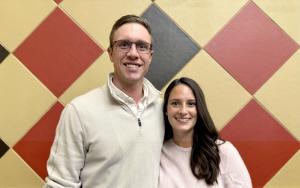
M. FLYNN: It’s very important for us that wherever we would live, we would make an impact there. And we felt like in Ord and Valley County that we could make a very tangible impact by being involved and that we could see that the results of what we are doing in the community. And we didn’t feel like we could get that some other places. So that was a big draw for us.
R. FLYNN: Living in Ord, I think you have the opportunity to have agency over how the community grows or how it how it changes over time. You can have impact at a personal level in a smaller community. It’s just … it’s a lot harder to do that in a Lincoln or Omaha. It just, yeah, your ability to have an impact and make a difference in in a small community just seems more tangible.
PIPA: The Valley Performing Arts Center owns the Golden Husk, an historic theater built in 1928 with the kind of nostalgic details you would imagine: a classic marquee out front and sumptuous curtains covering the stage. It’s so named because the red and black diamonds that cover the walls in a checkerboard pattern are supposedly lined with corn husks. Apparently, corn husks make for excellent acoustics. Melani and Ryan and I sat at the restored bar that looks out over the theater’s seats and stage.
[31:45]
R. FLYNN: And then I got into it, and I realized it was so much more than just that. And there’s the different experiences that the theater brings to Ord. I mean, really you almost have to go to a larger city of, like, Kearney, Grand Island, Lincoln, or Omaha to to really go get those same experiences. So the fact that we can have them here in Ord, I found truly amazing.
And then as I got older and we had kids, then I really saw the value of what these experiences and having them locally provide for the next generation to get these unique and creative experiences and and just kind of get get their wheels turning about what do artists do? What kind of unique performances are out there? And what excites them?
PIPA: Melani also serves on the board of SynoVation Valley Leadership Academy. Many municipalities have a civic leadership program, but like much else around here, Ord’s has its own special twist — it takes a very personal approach that inspires participants through experiential coaching. It’s a unique kind of investment in local human capital that complements the financial investments from the sales tax fund.
[32:53]
M. FLYNN: So we are actually in our 12th year. Over 50% particularly of the participants in the higher levels have started new business or personal ventures. That is huge in the community. Over 40% increase their community involvement.
R. FLYNN: In participating in SVLA, what I hear time and time again is this is great for a leader of my business, for a leader of the organization I’m involved with. But this has been most impactful in my own family. And I’ve heard multiple number of other people that have been in in the SVLA classes that I’ve been a part of say the same thing. And so I think what the greatest impact’s gonna be over the long run is having stable, loving, growth mind-setted families that’ll … there’s gonna have a positive impact on those kids being raised in those families that will in turn then have a greater impact on Ord, and that that’ll just be kind of an exponential growth situation. So that’s what I’m excited for.
PIPA: Ryan, Melani, and their kids are young and healthy, so an array of medical services might not feel like a priority right now. But Ryan remembers his initial impression of Ord and how the hospital fit into that.
[34:04]
R. FLYNN: Seeing, like, that big new hospital up on the hill, I mean, just does give you that sense of feeling of like this is a thriving community.
M. FLYNN: Yeah.
R. FLYNN: And I know that once moving here, I have an emergency room, I have those services available for me and my family that if needed are right here. And it’s not it’s not something that we gotta drive 45 minutes to get any emergency services.
But I think kind of what probably the biggest impact in my opinion of what Valley County Health Systems brings to Ord area and Valley County in general, is that it is a local location for, especially, I think elderly people. As you get older, I think people just naturally need to start going to the doctor more often, more frequently. So the fact that we have those services available locally, especially for that aging population, I think allows people to stay in a rural community longer.
We want people to be able to live where they’ve lived for decades and remain with their families that are here and enjoy the community that they’ve helped build. But then also, if those people are in Ord and they’re able to continue spending money in Ord, and they’re able to continue contributing to the community, I mean, I think that just is another driver of the local economy.
PIPA: For his part, Caleb Pollard is thinking about ways he can help provide guidance to future small business owners in Ord.
[35:29]
POLLARD: As Bob Stowell would say, you know, service is the rent you pay for your time on this earth. And I want to serve my community in more effective ways where I think we have some weakness. And so I would like to mentor younger entrepreneurs more.
[music]
I hope that people see the work that we’re doing and are inspired to understand that the future isn’t defined, and you can do something about it if you roll up your sleeves and start in your own backyard by doing something deliberate that you care about. It brings you a tremendous amount of self-gratification, but you also might start to see the ripple effects change your community.
PIPA: Ord’s story has so many dimensions to it, but at its heart has been a willingness of its residents to invest in themselves and their civic structures, first with the sales tax, then with the bond issue for a new hospital. Neither was easy, and it took committed leadership for both to pass. But, ultimately, investing in their local quality of life has helped make Ord an attractive place to live and work — and the Valley County Health System is a prime example.
Like many other rural hospitals, it’s faced real financial pressures and workforce challenges. But its innovative leadership and committed staff, fiscal discipline, modern facilities, and cutting edge services — they all reflect the positive energy that runs throughout Ord.
It’s an economic anchor and a vision for the future that’s important to both young and old. And it proves that no matter how much Ord feels like a place imbued with nostalgia, it has consistently been ahead of its time. Thanks for listening.
[37:23]
WOODWARD: Well my kids, I can tell you, my kids, I asked them, we were just coming home from a baseball game and I said, if you could live in any place wherever you wanted and you had all the money in the world, where would you live? And they say, Valley County. And I say, oh, but there’s no limit to money. You can live on the beach, you can live anywhere. They still wanna live in Valley County.
So I hope that I hope that stays true for me for the future.
PIPA: My sincere thanks to all the people who shared their time with me for this episode. To provide further policy insights based on this episode, we also publish a Q&A with an outside expert on the Brookings website. You can find the link in the show notes.
Many thanks to the team who makes this podcast possible, including Fred Dews, supervising producer; Molly Born, producer; Gastón Reboredo, audio engineer; Daniel Morales, video manager; Zoe Swarzenski, senior project manager at the Center for Sustainable Development at Brookings; Adam Aley and Elyse Painter, also in the Center for Sustainable Development, who provide research support and fact checking; and Junjie Ren, senior communications manager in the Global Economy and Development program at Brookings.
Also, my sincere thanks to our great promotions team in the Brookings Office of Communications and Global Economy and Development. Katie Merris designed the beautiful logo.
Finally, support for this podcast is provided by Ascendium Education Group. The conclusions and recommendations of any Brookings publication or podcast are solely those of its authors and speakers, and do not reflect the views or policies of the Institution, its management, its other scholars, or its funders. Brookings recognizes that the value it provides is in its absolute commitment to quality, independence, and impact. Activities supported by its donors reflect this commitment.
You can find episodes of Reimagine Rural wherever you like to get podcasts and learn more about the show on our website at Brookings dot edu slash Reimagine Rural. You’ll also find my work on rural policy on the Brookings website.
If you liked the show, please consider giving it a five-star rating on the platform where you listen.
I’m Tony Pipa, and this is Reimagine Rural.
More information:
- Listen to Reimagine Rural on Apple, Spotify, or wherever you like to get podcasts.
- Learn about other Brookings podcasts from the Brookings Podcast Network.
- Sign up for the podcasts newsletter for occasional updates on featured episodes and new shows.
- Send feedback email to [email protected].
- Find out more about the Brookings-AEI Commission on U.S. Rural Prosperity.
- Discover more research on Reimagining Rural Policy.
The Brookings Institution is committed to quality, independence, and impact.
We are supported by a diverse array of funders. In line with our values and policies, each Brookings publication represents the sole views of its author(s).

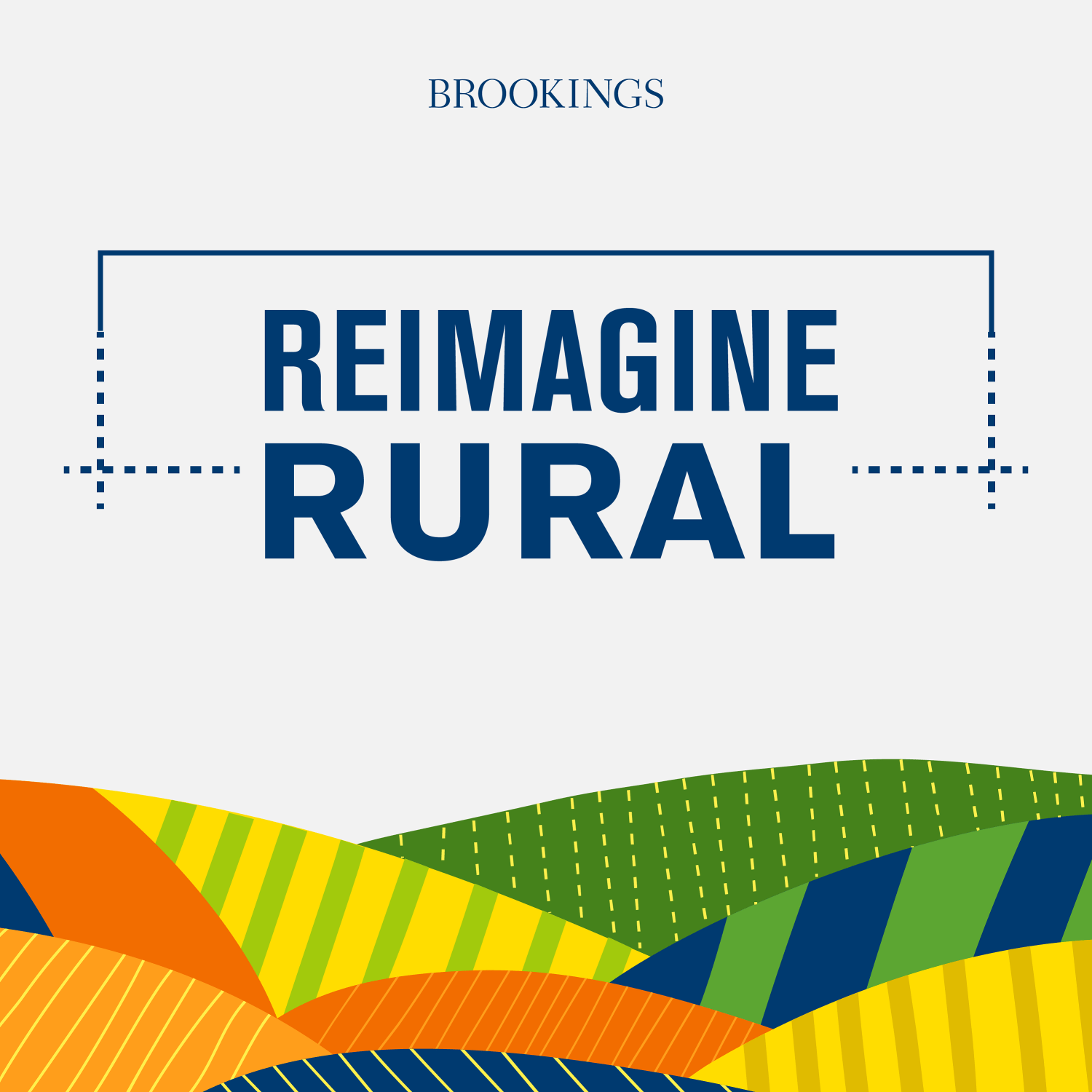
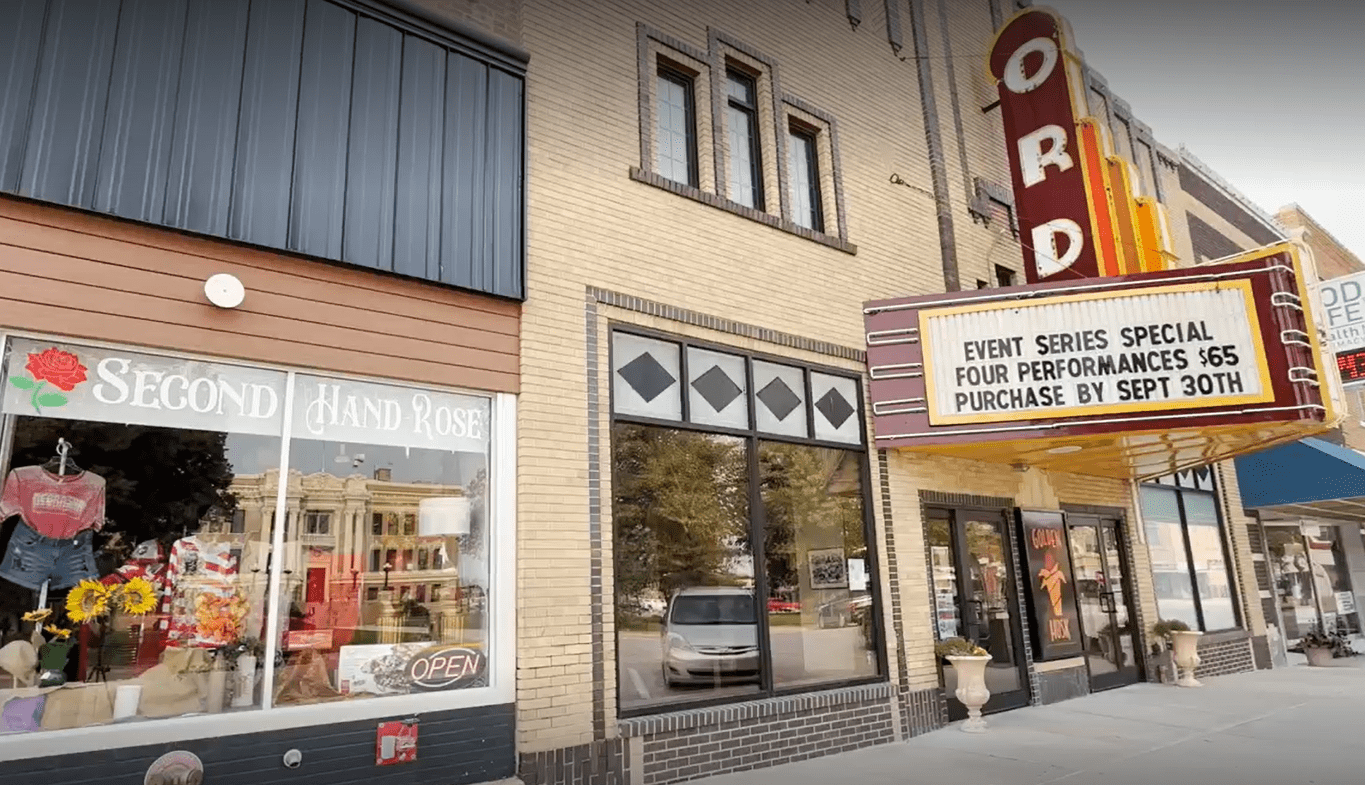
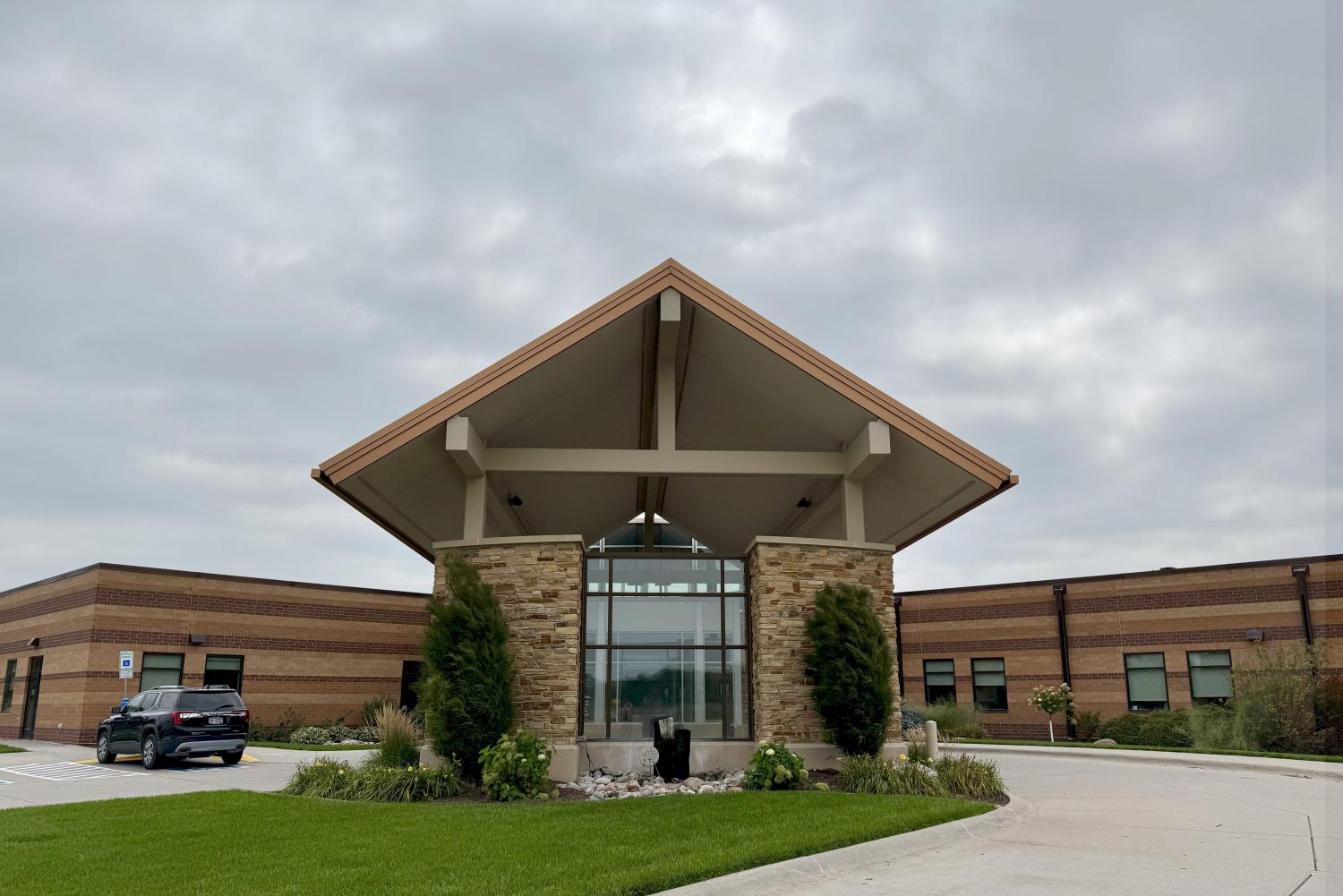
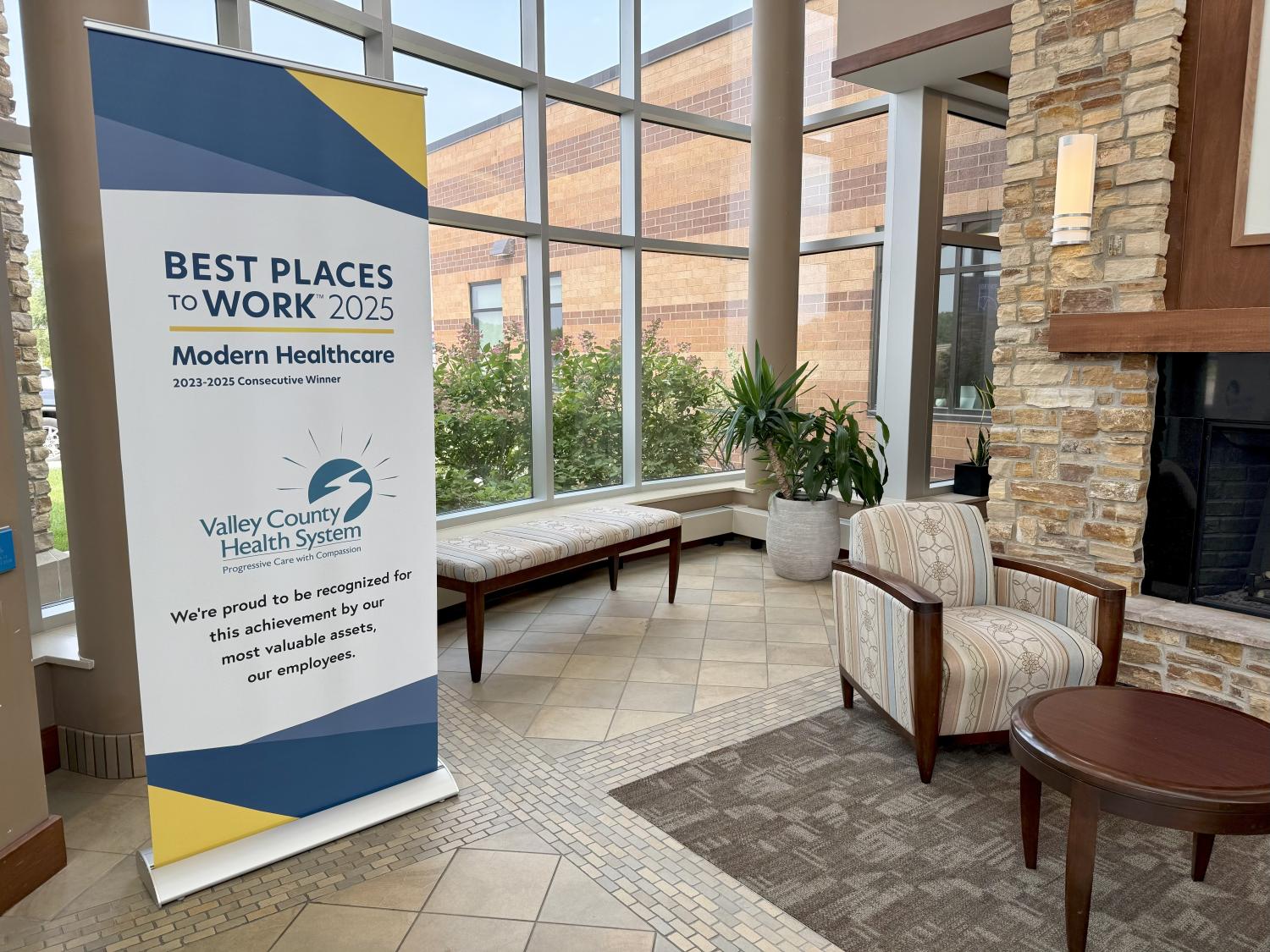
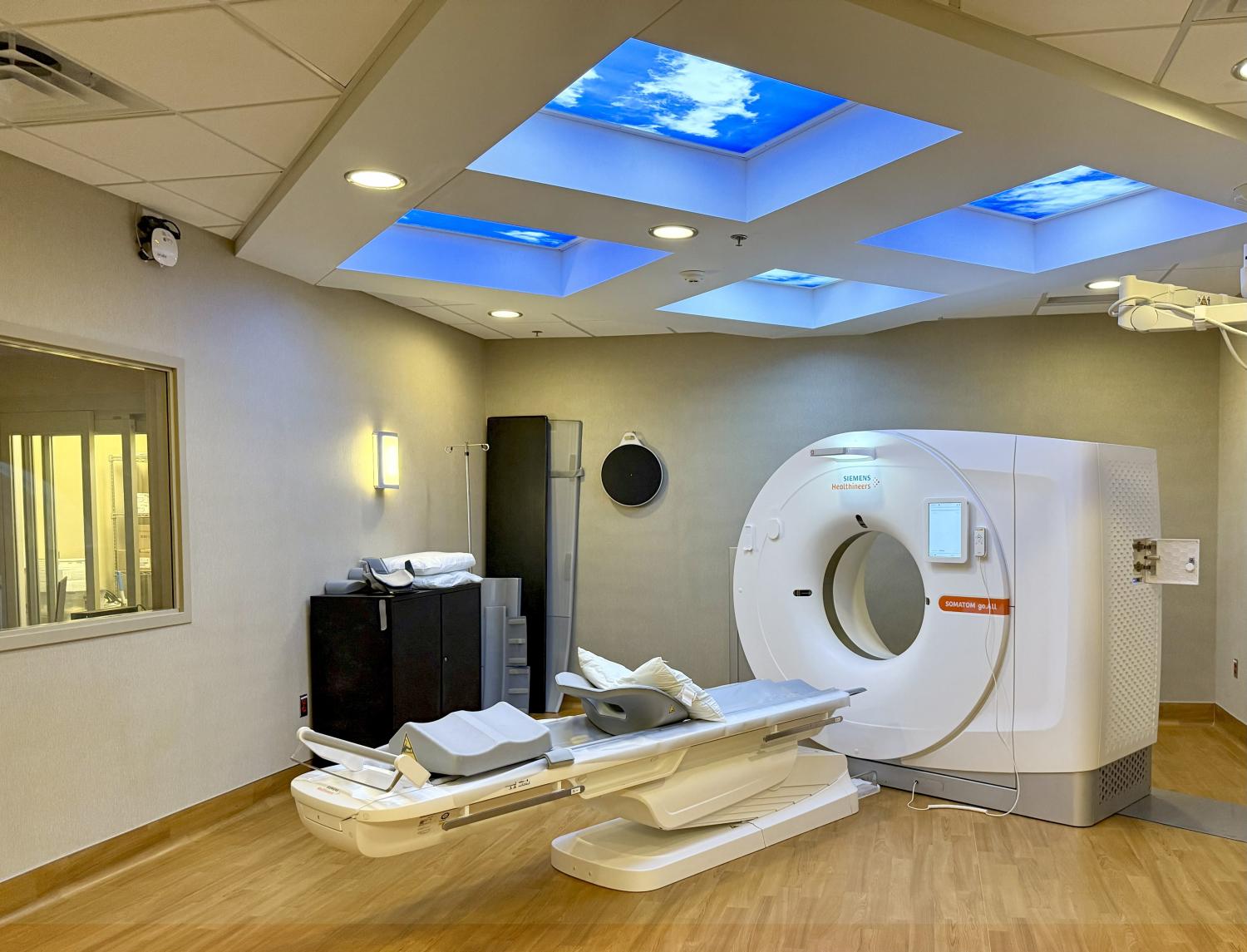
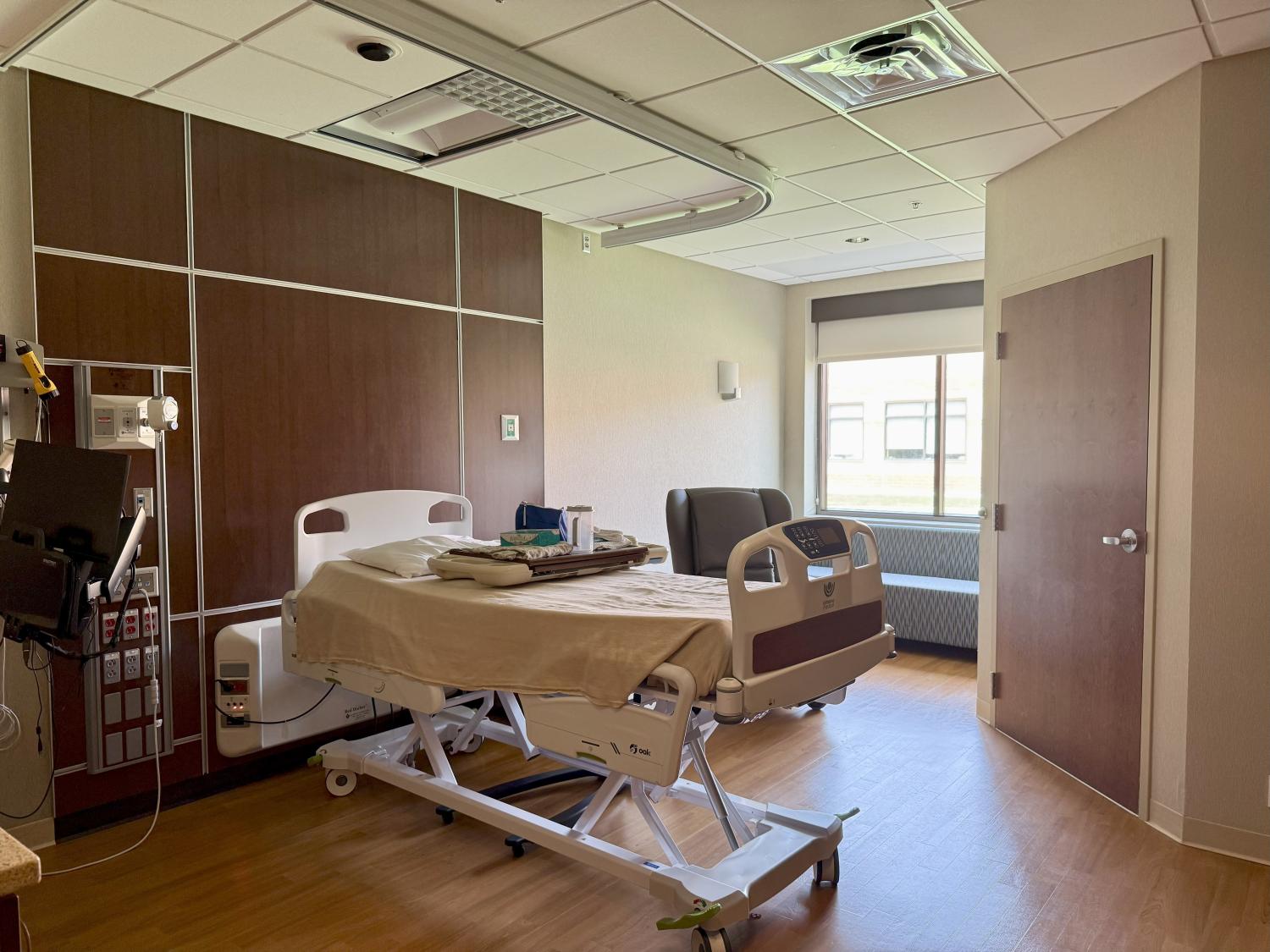
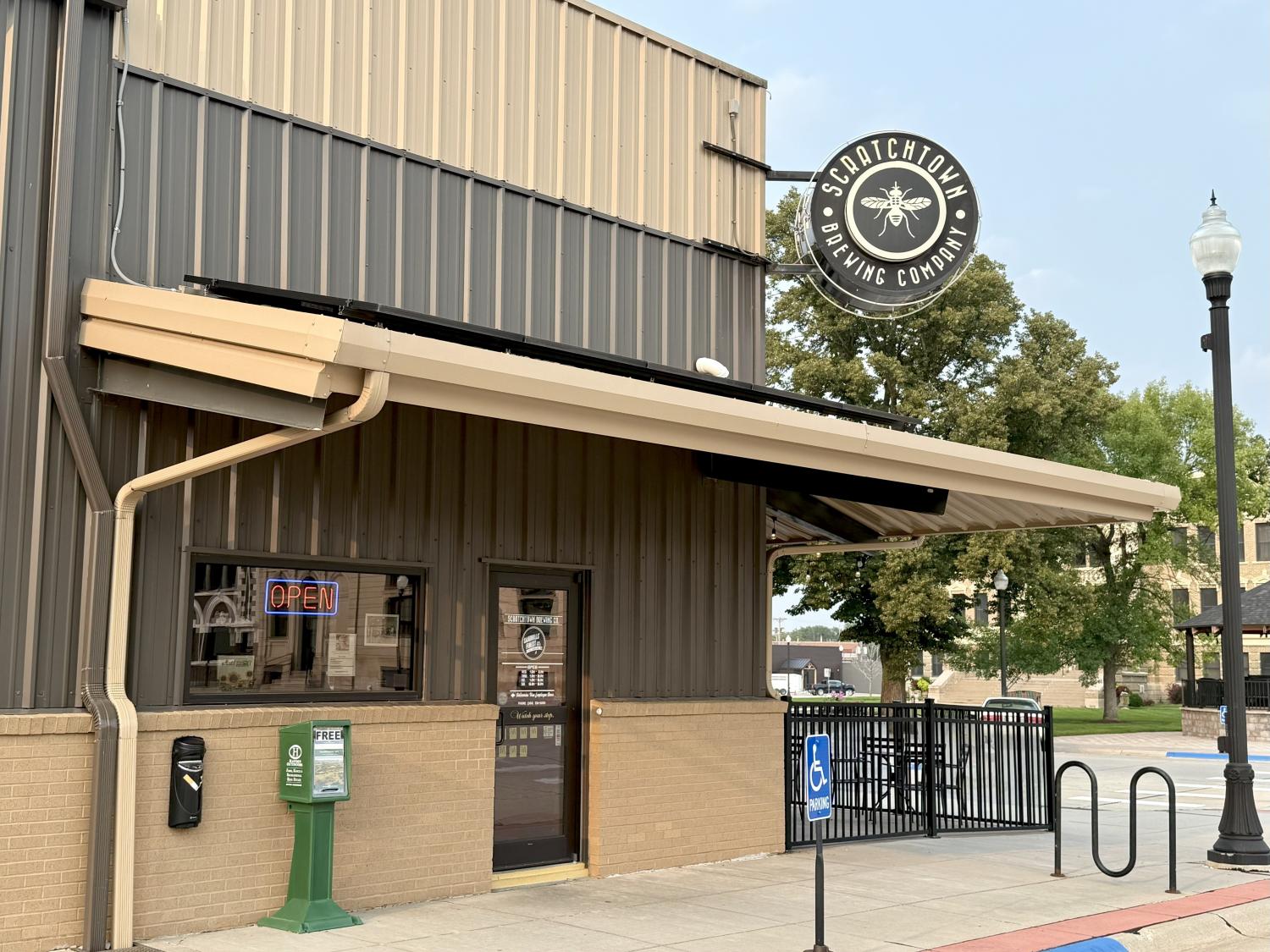
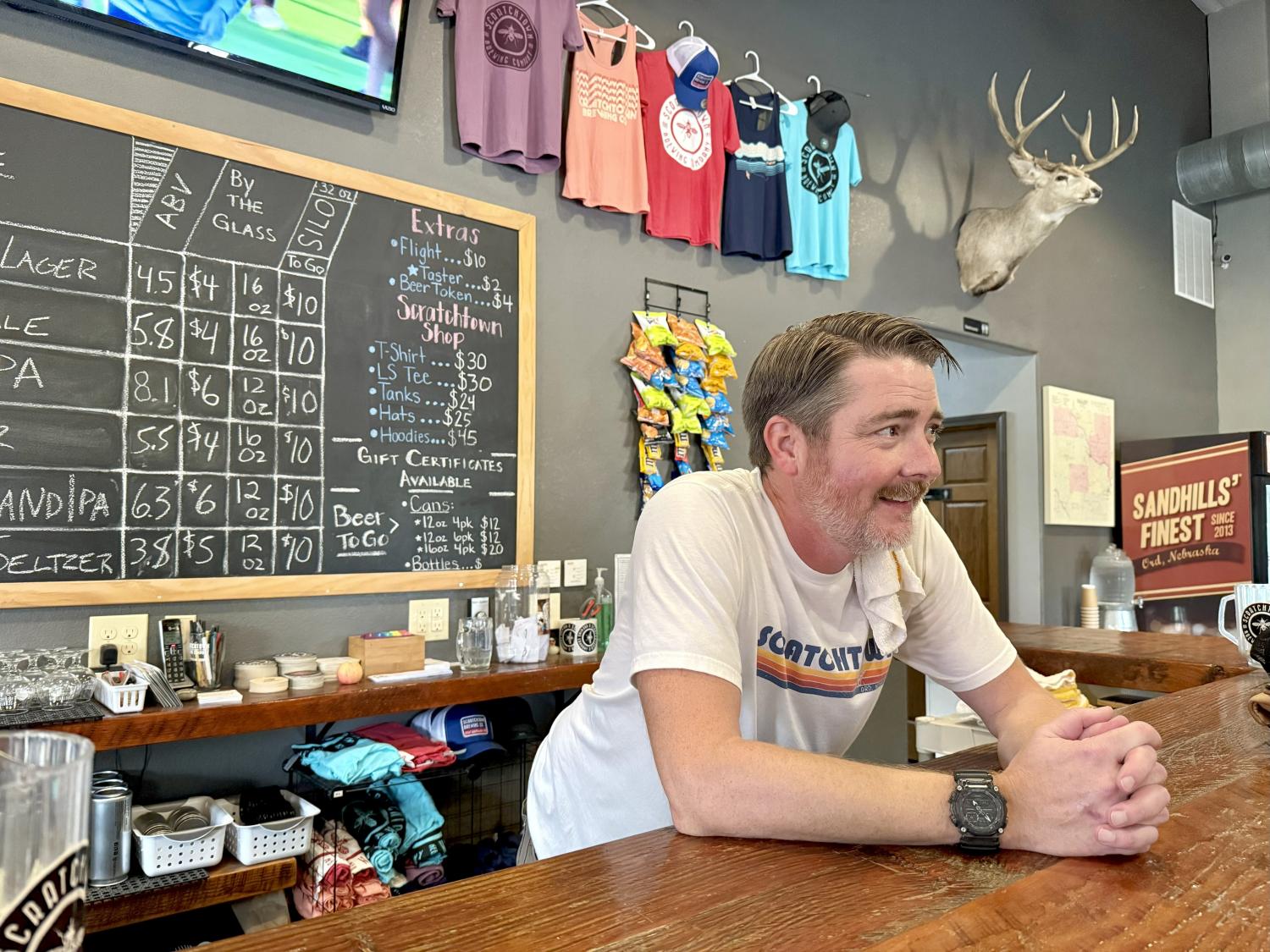
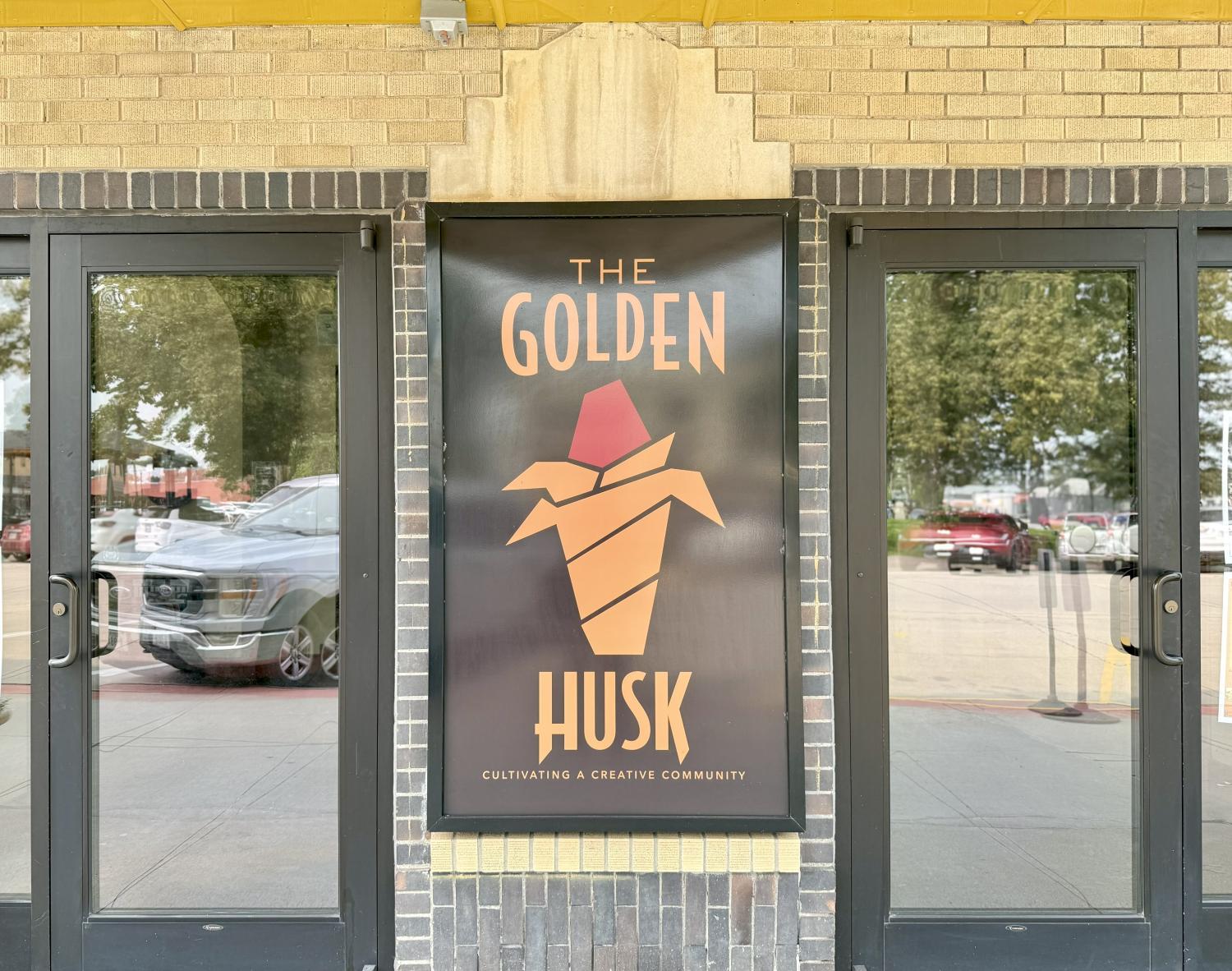
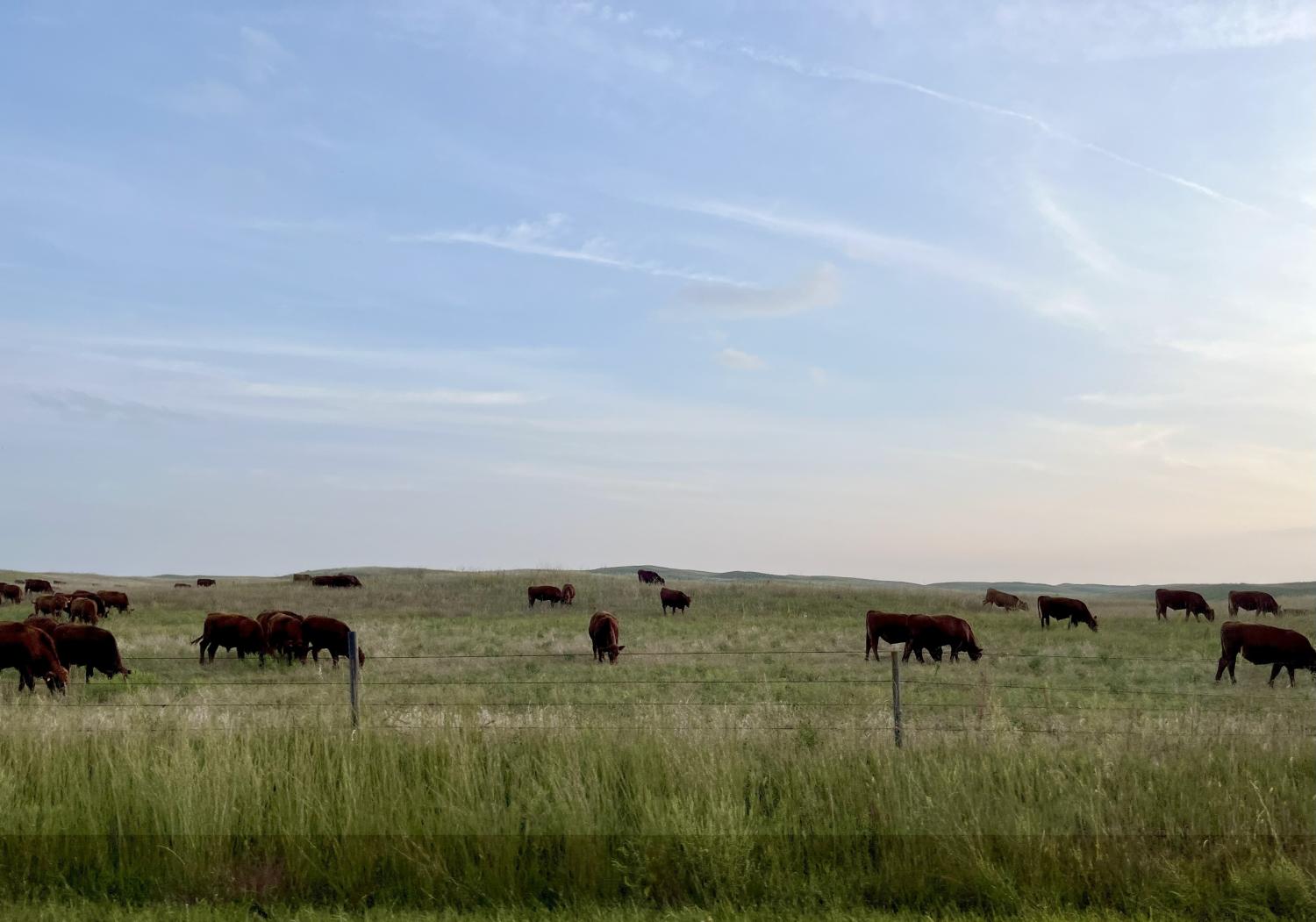
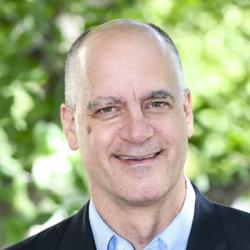


Commentary
PodcastHow Ord, Nebraska’s hospital injects vitality into this rural town on the edge of the Sandhills
Listen on
Reimagine Rural
September 30, 2025